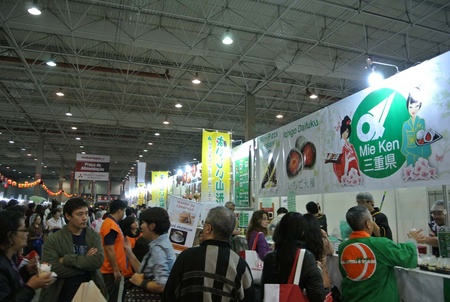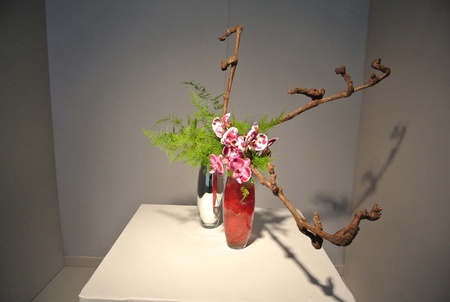My family is all of Japanese descent. My great-grandparents are Issei , my grandparents were born in Brazil - they are Nisei - and married descendants, as did my parents, who are Sansei . Despite this, little of the culture of my roots was passed on to me. I truly discovered Japanese culture as an adult.
Learning in childhood and denial in adolescence
During my childhood, I would visit my paternal grandmother in the interior of São Paulo - or spend a few days on vacation there. With her, I learned how to count numbers up to ten, words (like abunai , “dangerous”) and simple phrases, like mizu chodai (“water, please”, an expression most used by children).
Both in her house and in mine, we had the habit of using everyday expressions in Japanese: ohayou (“good morning”), oyasumi (“good evening”), itadakimasu (“thank you for the food”), gochisousama (“thank you for this meal”), tadaima (“I have returned home at this moment”). But this habit was lost over time...
Then, in pre-adolescence and adolescence, I went through another phase, a certain denial of culture and my own roots. I wasn't interested. In reality, my focus was different - dedicating myself to school, studying English and thinking about the Entrance Exam.
Discovery
Back when I was in college, I worked on writing a website commemorating the 100th anniversary of Japanese immigration to Brazil and, therefore, followed the events that celebrated the date. Then, I started interning at Bunkyo (Brazilian Society of Japanese Culture and Social Assistance), where I began to really understand Japanese culture. It was like an immersion!
Thus, I learned values and customs, as well as learning about cinema, music ( shamisen , a type of banjo, and taiko , the famous Japanese drum, which are my favorites!), dance (traditional and folk), art - ikebana (art of flower arrangement), kirigami (art of paper cutting), furoshiki (fabric wrapping technique), shodo (calligraphy), among others -, language, history of immigration and establishment of the Japanese in Brazil, commemorative dates (such as Girls' Day, Hina Matsuri ; Boys' Day, Kodomo no Hi ; and New Year's Day, shougatsu ).
I also discovered Japanese culture festivals. For me, the most notable ones are Bunka Matsuri, performed by Bunkyo; the Tanabata Matsuri - Festival of the Stars, organized by ACAL – Associação Cultural e Assistencial da Liberdade and the Miyagi Prefectural Association; and the Japan Festival, by Kenren (Federation of Associations of Japanese Provinces in Brazil).

I discovered that there are several partnerships between the Brazilian and Japanese governments for scholarships in Japan - the vast majority in the areas of Exact Sciences and Biology. There are opportunities offered by the Ministry of Education, Culture, Sports, Science and Technology (MEXT); by JICA (Japan International Cooperation Agency, in Portuguese), a body that supports the growth and socio-economic stability of developing countries; and by the Japan Foundation, an organization linked to the Japanese Ministry of Foreign Affairs to promote cultural exchange and mutual understanding between Japan and other countries.
I discovered traditional Japanese restaurants and the history of the traders in Liberdade, which in 1912 began to receive the first immigrants who started to live there and opened their own businesses.
New interests
This coexistence with Japanese culture even sparked my interest in studying the Japanese language, which I decided to do after finishing my English and Spanish courses. In classes, I learned even more about culture, values and customs.
It also aroused curiosity. I decided to find out more about my family’s journey and history. I asked my parents and grandparents what they knew or remembered. So, I researched details of who came to Brazil, in what year and ship, and what province they came from. I managed to find information through the Ashiato project database ("footprints", in Portuguese), launched in 2008, the centenary year of Japanese immigration to Brazil with the aim of preserving history and allowing descendants to know their origins.
The project transcribed 210,000 boarding records of Japanese immigrants who traveled on 322 ships, from 1908 to 1972, originally in kanji (ideograms) for the Portuguese language. The material was donated to the Immigration Museum (formerly Memorial do Imigrante), in the Brás neighborhood, and to the Historical Museum of Japanese Immigration in Brazil (MHIJB), in Liberdade, both in São Paulo.
In this search for history and even identity, I discovered that I am descended from four prefectures: Hokkaido, Fukushima, Kumamoto and Nagano. And I wanted to know more. I was curious to learn about the associations in each of these provinces and their respective activities. Unfortunately, the kenjinkais - as they are also called - depend heavily on support from the government of their province to survive.
And this cycle ended with the trip I took to Japan. From the beginning of learning until before traveling, my view of Japanese culture changed a lot. After returning to Brazil, I am sure that the experience in my family's country of origin made me understand the culture better and realize that what we see and know here in Brazil is just the tip of a vast world.
© 2015 Tatiana Maebuchi






